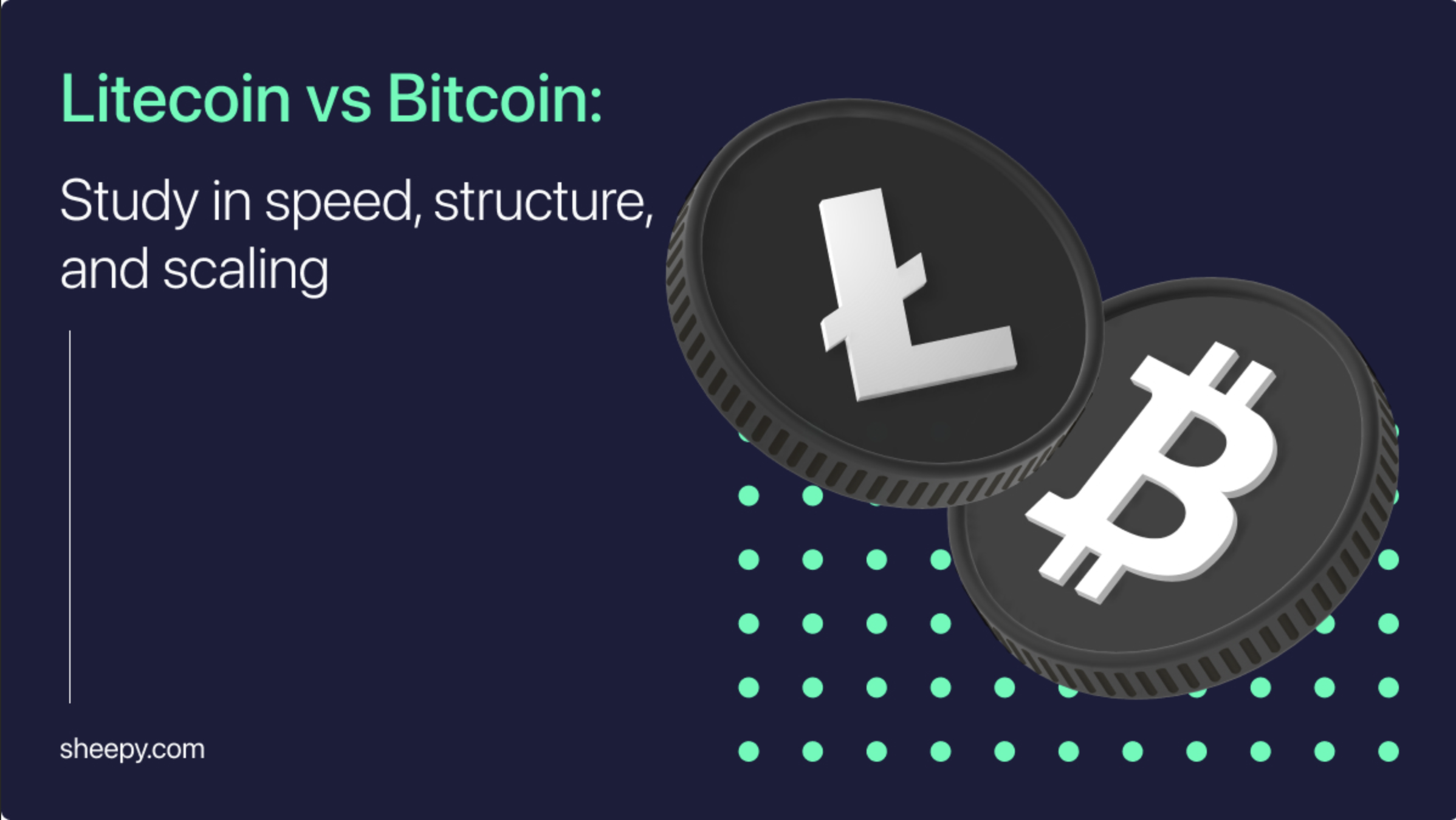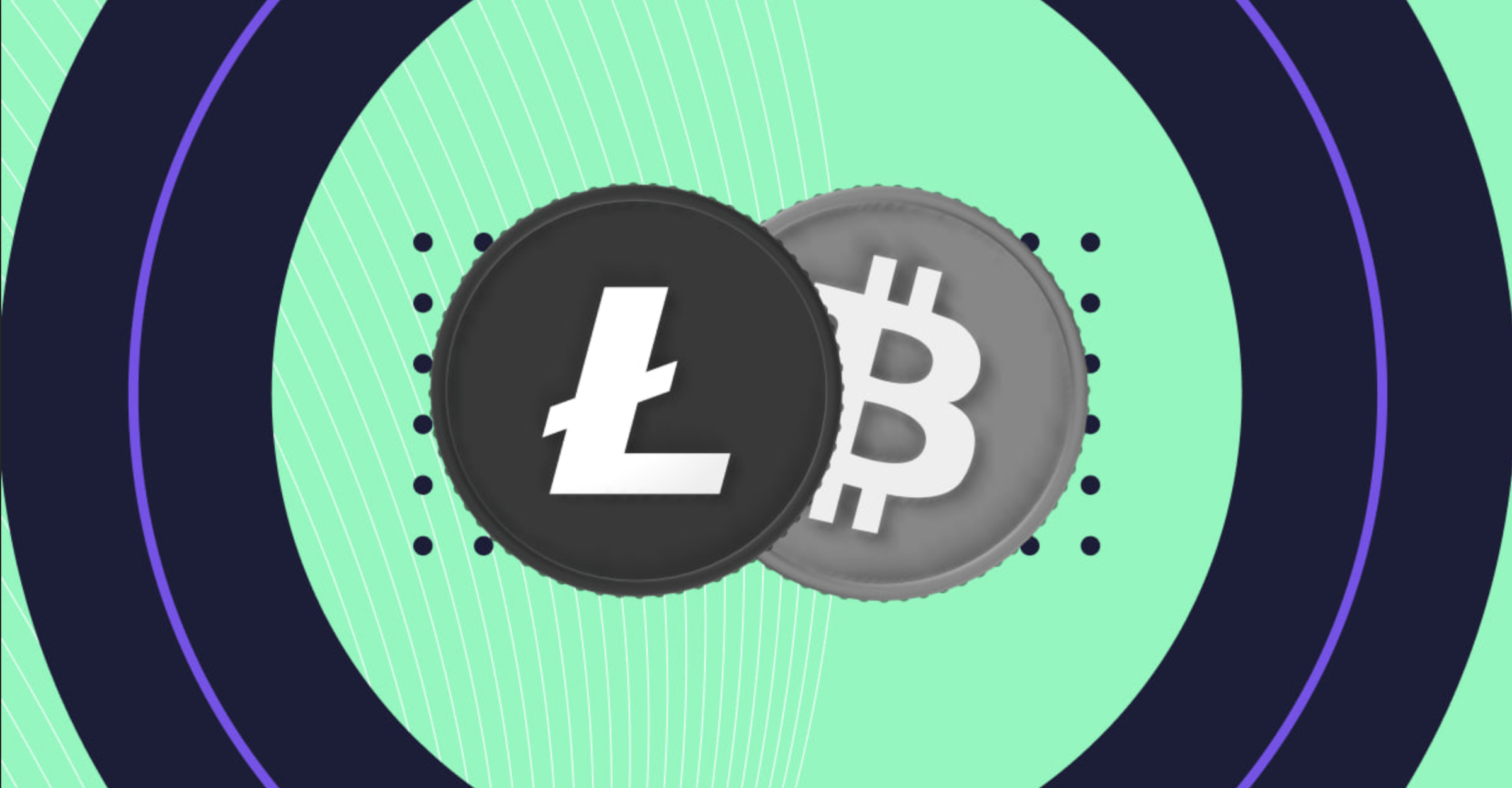You’ve probably heard the debate: Litecoin vs Bitcoin. They get compared all the time, and it makes sense – both have been around for years, both are well-known, and both still shape how we think about cryptocurrency. But here’s the thing. They weren’t built to do the same job. Bitcoin moves slow on purpose. Litecoin, on the other hand, was made for speed. If you’re trying to understand why that matters, it helps to know where each one fits.
The Origin Story: Why Bitcoin And Litecoin Were Created
Back in 2009, something strange and new appeared online. It wasn’t a product or a company. It was a short paper, written by someone calling themselves Satoshi Nakamoto. That paper introduced Bitcoin – a form of digital money with no bank, no middleman, and no borders. People could send value over the internet like they send an email. And once it launched, it never really stopped. Bitcoin became a kind of digital gold, not fast, but solid. Its blocks come every ten minutes. That’s slow, but it’s meant to be. The system was designed to be stable and hard to change.
Two years later, Charlie Lee had an idea. He didn’t want to replace Bitcoin – he liked it. But he saw something missing. In his eyes, Bitcoin was too slow for daily use. So, he built Litecoin. It wasn’t a revolution, more like a smart adjustment. The blocks were faster – 2.5 minutes. The mining process used different math. Transactions cost less. It was a coin for people who wanted speed without giving up too much of what made Bitcoin strong. That’s when people first started drawing lines in the sand: Litecoin vs Bitcoin – which one would win for everyday use?
That’s where Litecoin vs Bitcoin really began. Not as a fight, but a difference in roles. One was made for holding, the other for moving. Over time, that gap became more clear – not just in how they work, but in what they stand for. Today, the Litecoin vs Bitcoin question is still open, but its roots go back to those early days.
Speed, Scalability, And Fees: What Really Sets Them Apart
Ask anyone who’s used both, and they’ll tell you – Litecoin feels faster. It’s not just on paper. It’s something you notice when you’re moving funds or checking confirmations. Compared to Bitcoin, which locks a block roughly every ten minutes, Litecoin cuts that wait down to about two and a half. That simple change makes a big difference when time matters. In the Litecoin vs Bitcoin conversation, speed is usually the first thing that comes up.
Now, talk about scalability and the story shifts. Bitcoin is secure and battle-tested, but that comes at a cost. When the network gets busy, fees climb, and the delays stretch out. It’s the price of popularity, and some say it’s worth it. But others want something that works without the slowdowns. That’s where Litecoin offers a smoother ride. With a lighter structure and higher transaction capacity, it handles more movement during busy market moments.
Then there’s the cost. During surges, Bitcoin fees can shoot up – not ideal for small or frequent transactions. Litecoin keeps those fees lower, even when the market is jumping. That’s why some traders and platforms use Litecoin for internal transfers. It’s quicker, cheaper, and less of a headache. This practical difference continues to shape how Litecoin vs Bitcoin is viewed by everyday users, not just developers and crypto analysts.
So when we talk about Litecoin vs Bitcoin, it’s not just numbers or charts. It’s about what kind of experience you want. Do you value the stability of Bitcoin, even if it’s slow? Or do you need the speed and low fees Litecoin brings? Neither answer is wrong. But for people moving fast – and money that needs to follow – the differences are hard to ignore.
Real-World Usage And Payment Adoption Today
Litecoin vs Bitcoin isn’t just a debate for crypto forums. It’s something that affects how people move money every day. In the early years, Bitcoin was the only name in the game. But as fees rose and speed stayed slow, users began looking for alternatives. Litecoin stepped in with faster confirmations and lower costs. Over time, it gained a solid reputation among people who needed simple, no-fuss transactions.
Today, the way businesses use cryptocurrency tells a bigger story. Both Litecoin and Bitcoin are accepted by a growing number of merchants and platforms. One reason is the rise of payment services that make it easy to accept crypto payments without dealing with blockchain complexities. Services like Sheepy crypto, for example, allow companies to accept crypto payments in both Bitcoin and Litecoin. For a growing number of retailers, that means no more choosing between speed and network trust – they can offer both, side by side.
The real shift is in how people view purpose. Litecoin vs Bitcoin now plays out in checkout systems, booking services, and even mobile apps. Customers want fast service, but they also want reliability. Businesses want smooth integration, not technical headaches. With Sheepy crypto payment gateway enabling companies to accept crypto payments, adoption has become less about ideology and more about function. What used to be a technical debate is now about convenience and reach.
So when someone asks about Litecoin vs Bitcoin, the answer isn’t only about the coins. It’s also about how they’re used in practice – and who’s making that usage possible in the real world.
Security And Decentralization: Comparing The Core Principles
People often focus on price or speed when they compare Litecoin vs Bitcoin, but the real heart of the difference lies deeper – in how each coin is built to secure its network and resist control. Both are decentralized cryptocurrencies, but their methods and priorities vary. Bitcoin is the original. Its strength comes from size, history, and the huge number of nodes verifying every transaction. It’s slow on purpose, built for maximum security, not speed. This design has helped it stand firm through every wave in the crypto market.
Litecoin, while based on the same blockchain idea, approaches things with a lighter touch. It uses a different mining algorithm – Scrypt instead of SHA-256 – which was once seen as a way to keep mining accessible. Over time, both networks have become more industrialized, but the core idea of decentralization remains. Litecoin doesn’t try to compete directly with Bitcoin’s massive hash power. Instead, it offers a different balance between security and usability. In the Litecoin vs Bitcoin debate, this trade-off is part of what sets them apart.
Some argue that Ethereum vs Bitcoin is a more dramatic contrast in values, since Ethereum moves fast and changes often. Bitcoin and Litecoin, by contrast, stay steady and evolve slowly. Yet even between them, there are subtle shifts in how updates are handled and how communities respond to risk. The cryptocurrency space keeps changing, but the core ideas behind Litecoin vs Bitcoin – about trust, access, and control – continue to shape how both coins function and grow.
What The Future Holds: Outlook For Litecoin And Bitcoin
The conversation around Litecoin vs Bitcoin always circles back to one thing – the future. Investors, developers, and everyday users all want to know which coin will stay relevant, and which one might fade. Bitcoin has the advantage of global name recognition. It’s the face of cryptocurrency for most people. Its limited supply and slow pace of change make it a long-term bet. Many treat it like a digital version of gold – a store of value rather than a currency for spending.
Litecoin, meanwhile, is built for motion. Its future often ties to how it’s used in real life. Events like the Litecoin halving – when mining rewards are cut in half – have shown that this coin follows its own rhythm. These halvings affect the Litecoin price, but also remind users that it has its own economic model. For Litecoin to thrive, it must remain useful. That means faster payments, reliable fees, and ongoing updates without losing its base.
Some think Bitcoin Cash vs Litecoin is a more useful comparison, since both try to serve as daily-use cryptocurrencies. Others compare Litecoin vs Bitcoin Cash in terms of adoption or technical updates. But whatever lens you use, Litecoin vs Bitcoin remains the central theme. Will Bitcoin stay dominant by holding value, while Litecoin gains ground through utility?
In a market that keeps changing, both coins will likely survive – but for very different reasons. And that split might be exactly what gives each one its long-term place.
Both Bitcoin and Litecoin have earned their place in the world of cryptocurrency. One is slow, steady, and trusted by millions as a long-term store of value. The other is quick, affordable, and built for real-world use. They don’t need to compete – they serve different goals and different people. What matters most is understanding how each fits into the bigger picture. Whether you’re investing, spending, or building, the right choice depends on your needs, not just on the coin itself.

















